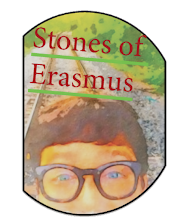Educational non-profits like the International Baccalaureate and others do a good job of standardizing practices that teachers have been using for decades — perhaps even generations. I made a lesson resource on teaching Plato's Allegory of the Cave. And it has served me well as an educator. However, I wondered if it would hold up to IB standards for the Middle Years Program and beyond. Let's see.
— Greig from Stones of Erasmus
I wondered aloud: Does "The Cave" lesson align with MYP by linking communication, perspective, and inquiry on truth? It does. Let’s break it down using International Baccalaureate language.
IB Middle Years Program (Language & Literature)
Let’s think about how the Cave lesson ties to the IB’s scope: The IB MYP spans ~Grades 6–10 (Years 1–5). While I think it does a good job aligning standards to this grade band, it also works really well with Grades 11–12; Check out the end of this post — I include an optional IB Diploma Program bridge at the end.
Unit framing (ready to paste into the International Baccalaureate proprietary learning management system ManageBac/Atlas)
Subject group: Language & Literature (since IB schools use scores of other resources, please know that this lesson on the Cave can co-badge with Individuals & Societies)
Key concept: Communication (how representations convey/shape meaning)
Related concepts: Perspective, Representation, Intertextuality
Global context: Personal & cultural expression (how ideas of truth/reality are expressed)
Statement of inquiry: Representations of reality shape what we accept as truth.
Inquiry questions
Factual: What is an allegory? What happens in Plato’s cave?
Conceptual: How do perspectives and media filter our perception of reality?
Debatable: Are images and stories reliable ways to know what is “real”?
Approaches to Learning Skills (explicit teach/track)
Thinking: critical & creative (evaluate claims; generate analogies), transfer (text-to-world/media).
Research/Media literacy: source purpose, bias, provenance (incl. film clips, diagrams).
Communication: organizing ideas for oral seminar; crafting clear analytical paragraphs.
Self-management: goal setting for seminar roles; exit tickets for metacognition.
Learning experiences (adapting the Stones of Erasmus flow to the IB MYP)
Hook/Do-Now (5–7 min). Quick write to Essential Q (How do I know what’s real?)—keep. Tie to SOI/inquiry questions.
Close reading (15–20). Read the plain-language text of The Cave; annotate symbols and shifts (chains/shadows/fire/sun/return). Pair-share a gist paragraph. Note — all of these resources are turn-key and ready to go in the Stones of Erasmus learning resource.
Guided discussion (15). Use Qs 1–3; introduce Two Worlds chart with a Socratic “hot seat”: defend/critique Plato’s hierarchy (knowledge vs. opinion/images).
Intertextual link (10). Matrix/Truman Show clips; students record claim-evidence-reasoning on an organizer (media as “cave”).
Exit ticket (3–5). One way the allegory appears in their world (social media, VR, advertising).
Summative Assessment Ideas (MYP Years 2–5)
Task A — Literary analysis paragraph/mini-essay
Prompt: Explain how one symbol in the allegory develops Plato’s claim about reality and knowledge. Use precise textual evidence.
Assesses: Criterion A (Analysing) & D (Using language)
Success criteria (adapted from levels 5–8):
Adept selection of evidence; clear explanation of how form (allegory/symbol) creates meaning; coherent argument; accurate, sophisticated language.
Task B — Socratic seminar with media comparison
Prompt: To what extent is the “cave” a useful metaphor for today’s media environments? Bring one outside example.
Assesses: Criterion A (Analysing) & C (Producing text—spoken)
Products: Pre-seminar position card (organized notes), 10–15 min seminar, reflective paragraph on shifts in your view.
Criteria emphasis: Organization for purpose/audience; development and synthesis of ideas; clear oral expression and active listening.
Task C — Creative representation + rationale
Prompt: Redesign the cave metaphor for a modern context (comic strip, infographic, micro-fiction, short video) and write a 300–500 word rationale justifying your choices using allegory terminology.
Assesses: Criterion C (Producing text) & D (Using language)
Criteria emphasis: Purposeful structure, stylistic choices, vocabulary control, explanation of creative decisions using subject language.
Optional extension (Year 5): Comparative analysis of Plato and a contemporary thinker on reality/representation (e.g., Baudrillard excerpt), meeting A & D at higher sophistication.
MYP Criterion for The Allegory of the Cave in Plain Language
Quick MYP-ready Rubrics Ready-to-Use
Criterion A (Analysing)
7–8: Perceptive analysis of content/technique/context; well-chosen evidence; insightful conclusions.
5–6: Effective analysis with relevant evidence; clear conclusions.
3–4: Some analysis; uneven evidence.
1–2: Limited comprehension/description.
Criterion B (Organizing) (use for essay tasks where structure is assessed)
7–8: Purposeful organization; cohesive paragraphs; effective referencing.
... (scale down similarly)
Criterion C (Producing text)
7–8: Sophisticated choices for purpose/audience; coherent development; engaging style.
...
Criterion D (Using language)
7–8: Precise, varied vocabulary; accurate grammar; subject-specific terms used effectively.
...
Differentiation & inclusion (MYP-aligned)
Scaffolds: dual-coding (images + text), guided annotations, sentence starters for claims/rebuttals, glossary for allegory, epistemology, empirical, abstract.
Extensions: add a primary-source excerpt from Republic Book VII for close reading; student-led colloquy on whether art belongs “below the line.”
Wellbeing: pre-teach the “killing the freed man” as allegorical; offer opt-out from that specific detail if needed.
Strengths & Suggestions and Growth Areas
Strengths
Clear essential question and high-interest, accessible retelling—excellent for mixed-readiness classes.
Ready-to-use discussion/comprehension sets + answer keys; strong entry into philosophical thinking for ELA.
Authentic classroom provenance with student artifacts and teacher reflections (credibility + practicality).
Optional bridge to Grades 11–12 (IB DP)
TOK: Knowledge question—To what extent are sense perceptions reliable ways of knowing? Link Areas of Knowledge: The Arts vs Human Sciences using the cave as metaphor
- Language A: Literature: Paper-2 style comparative prompt on representation vs. reality across texts/films.



